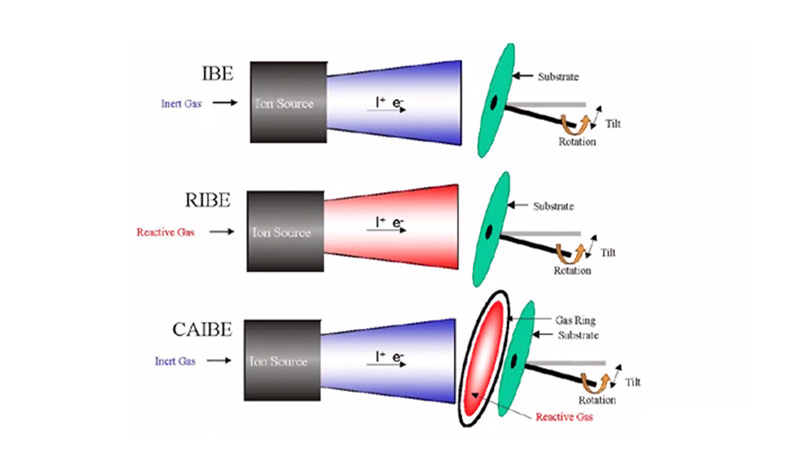
Posted on
In ion beam etching, a type of dry etching, an ion source is used to remove material from a substrate. This process can be used to create device components and nanostructures, such as in integrated circuits and other semiconductor applications.
To enable high yield and meet performance requirements, your application may require different etch technologies. There are three IBE techniques to choose from: standard ion beam etch, reactive ion beam etch (RIBE), and chemically assisted ion beam etch (CAIBE).
Benefits of Standard Ion Beam Etch (IBE)
In standard or traditional ion beam etching (IBE), a broad beam, highly directional source is used to physically remove material from a substrate. An inert gas is introduced to the ion beam source, is ionized, and moves directionally towards the substrate with high energy. The ions then hit the substrate and the impact removes, or sputters, the material.
This method of etching provides high accuracy and precision through control of the ion beam energy. During the IBE process, engineers can also use an in-situ secondary ion mass spectroscopy (SIMS) to detect a new layer or material in real time, stopping the etch process at the right point.
Benefits of Reactive Ion Beam Etch (RIBE)
RIBE is similar to standard ion beam etching. In RIBE, the beam is composed of reactive gases, instead of inert gases. Instead of a physical milling technique, the gas reacts with the substrate material itself to chemically remove the material.
This process can be more precise and controlled than standard IBE, depending on the substrate material, making it useful for etching very thin film coating layers where it is integral to prevent damage to sublayers.
Benefits of Chemically Assisted Ion Beam Etch (CAIBE)
In CAIBE, un-ionized reactive gases are introduced into the process independent of the ion beam, closer to the substrate. Like IBE, ions from inert gases are generated through the source. Similar to RIBE, this process introduces reactive gases as well; however, they exist only near the substrate. When the inert species interact with the reactive gas, it causes a chemical reaction, and that reaction results in material removal.
The combination of an inert gas ion beam and placement of the reactive gas close to the substrate can make the process faster than RIBE and enable higher precision than standard IBE.
Leveraging Different Etch Techniques for Uniform Removal
These etching methods are beneficial for delayering, chip assessment and other applications where high precision is needed. RIBE and CAIBE can be used in addition to standard IBE in order to adjust and control etch rates for a highly uniform process and removal of multiple materials.
Denton’s solution offers all three techniques in one etch system for excellent process control and performance, while reducing factory footprint. Contact us to learn more about the right ion beam etch technology for your application.